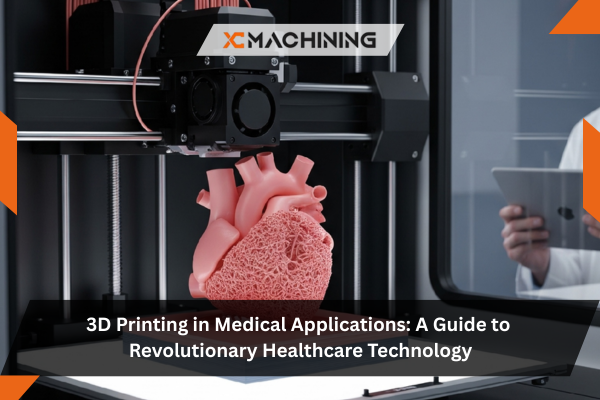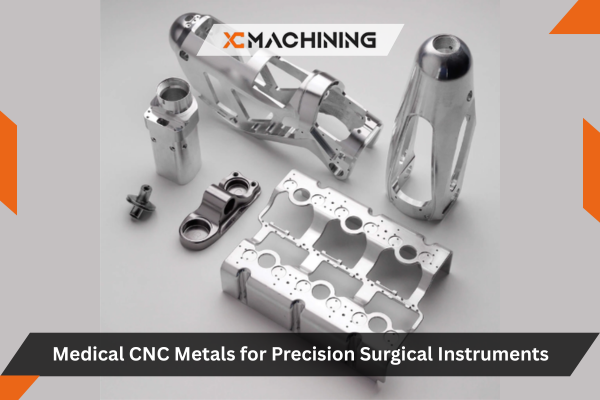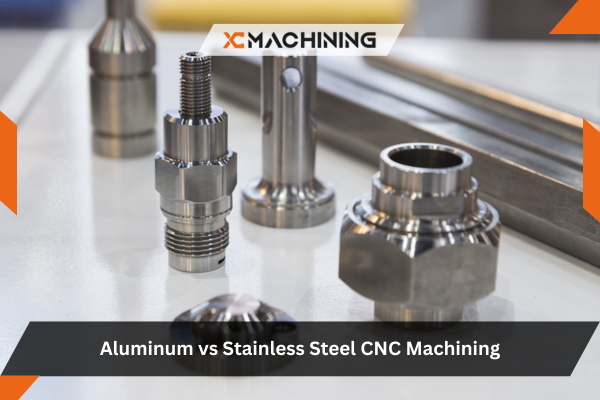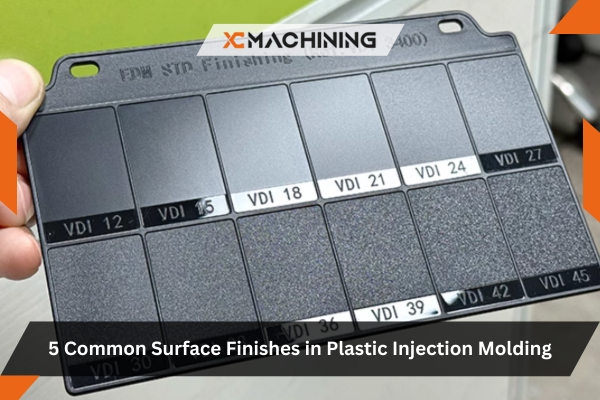What This Guide Covers
3D printing in medical applications is revolutionizing healthcare delivery, patient outcomes, and surgical planning in ways that seemed impossible just a decade ago. From custom prosthetics printed in hours instead of weeks to surgical guides that reduce operating time by 40%, additive manufacturing is transforming medicine from one-size-fits-all to truly personalized care.
In this comprehensive guide:
- Current applications of 3D printing in medical field
- Revolutionary technologies changing patient care
- Benefits and limitations of medical 3D printing
- Regulatory considerations and biocompatibility
- Real clinical outcomes and case studies
- Future directions and emerging applications
Whether you’re a healthcare professional exploring new treatment options, a medical device engineer evaluating manufacturing methods, or simply interested in how technology is transforming medicine, this guide provides insights from someone who has worked on over 40 FDA-cleared medical 3D printing applications.
Inhaltsübersicht
Understanding 3D Printing in Medical Applications
After 13 years developing medical devices and applications of 3D printing in medical field, I’ve witnessed this technology evolve from experimental curiosity to standard clinical practice. Last year, I consulted with a craniofacial surgeon who was struggling with a complex skull reconstruction case. Traditional approaches would require multiple surgeries, extensive bone grafting, and uncertain outcomes. Using 3D printing in medical applications, we created patient-specific titanium implants and surgical guides directly from the patient’s CT scan. The surgery took 2.5 hours instead of the anticipated 6-8 hours, the implant fit perfectly on the first attempt, and the patient recovered in half the expected time.
That case exemplifies why 3D printing in medical applications matters: it enables truly personalized medicine tailored to each patient’s unique anatomy, improving outcomes while reducing costs and surgical risks.
The technology works by converting medical imaging data (CT scans, MRIs) into digital 3D models, then physically printing those models or devices layer by layer using biocompatible materials. This process creates custom solutions impossible to manufacture through traditional methods.
Major Applications of 3D Printing in Medical Field
Based on extensive work across multiple medical specialties, these applications deliver the most significant clinical impact:
1. Patient-Specific Surgical Planning Models
What they are: Accurate physical replicas of patient anatomy printed from medical imaging data.
Clinical benefits:
- Surgeons can practice procedures before operating
- Complex anatomy becomes tangible and understandable
- Surgical teams can plan approach and identify challenges
- Reduced operating room time
- Improved surgical outcomes
Real impact: A pediatric cardiac surgeon I work with uses 3D-printed heart models for every complex congenital heart defect case. He told me these models reduce his surgical time by 30-45 minutes on average and have eliminated several surgical complications he would have encountered during the procedure. For complex cases costing $15,000-$25,000 per hour of OR time, those minutes translate to substantial savings while improving patient safety.
Materials used:
- Clear resin for transparency (viewing internal structures)
- Flexible materials mimicking tissue properties
- Multi-material printing for different anatomical structures
- Color-coded anatomical features
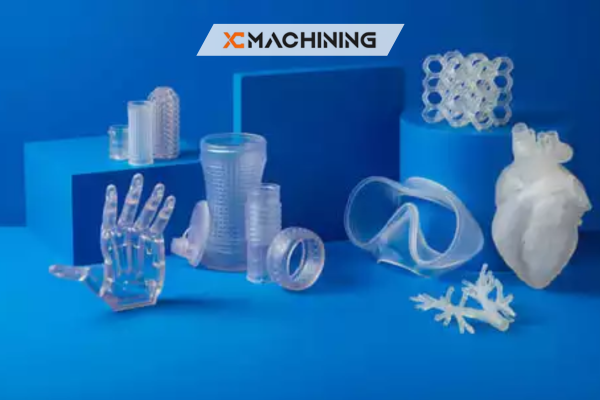
2. Custom Prosthetics and Orthotics
Revolutionary advantages over traditional methods:
| Faktor | Traditional Prosthetics | 3D-Printed Prosthetics | Improvement |
|---|---|---|---|
| Fabrication Time | 4-8 weeks | 24-72 hours | 90% faster |
| Kosten | $5,000-$50,000+ | $500-$5,000 | 80-90% less expensive |
| Fit Precision | Good (manual fitting) | Excellent (scanned fit) | Superior comfort |
| Personalisierung | Limited options | Unlimited design freedom | Highly personalized |
| Gewicht | Heavier | 40-60% lighter | Better comfort |
| Verfügbarkeit | Weeks of waiting | Same-day possible | Immediate access |
Real-world example: I worked with a nonprofit providing 3D-printed prosthetic hands to children in developing countries. Traditional prosthetics cost $8,000-$15,000 and require replacement as children grow—economically impossible for most families. The 3D-printed versions cost $50-$150 in materials, can be printed locally, and are easily resized as children grow. We’ve delivered functional prosthetics to over 300 children who otherwise would have had no options.
Anwendungen:
- Upper and lower limb prosthetics
- Custom orthotic braces and supports
- Diabetic insoles with pressure-relieving geometries
- Pediatric prosthetics (easily resized for growth)
- Sport-specific prosthetic components
3. Surgical Guides and Instruments
Technology overview: Patient-specific guides that direct surgical instruments to precise locations during operations.
Clinical applications:
- Orthopedic joint replacement surgeries
- Dental implant placement
- Spine surgery pedicle screw placement
- Tumor resection guides
- Fracture reduction and fixation
Documented benefits:
- 40-60% reduction in surgical time
- Improved implant placement accuracy
- Reduced radiation exposure (fewer intraoperative x-rays)
- Lower complication rates
- Faster patient recovery
Real case: An orthopedic surgeon I consulted with was performing complex knee replacement surgeries. Standard procedures took 90-120 minutes with variable outcomes depending on the surgeon’s experience and patient anatomy. After implementing 3D-printed surgical guides, his average surgical time dropped to 55 minutes, implant positioning improved (measured via postoperative imaging), and patient satisfaction scores increased by 28%. Insurance companies now preferentially approve his procedures because outcomes data shows lower complication rates.
4. Custom Implants and Bone Scaffolds
Technology advancement: Patient-specific implants designed to match individual anatomy exactly.
Materials used:
- Titan: Craniofacial reconstruction, spinal cages, joint implants
- Medical-grade polymers: Tracheal splints, airway stents, soft tissue support
- Bioactive ceramics: Bone scaffolds that promote natural bone growth
- Biodegradable materials: Temporary supports that dissolve as tissue heals
Applications of 3D printing in medical field:
Craniofacial reconstruction:
- Custom skull plates for trauma or tumor removal
- Orbital floor reconstruction
- Mandible reconstruction
- Complex facial implants
Spinal implants:
- Patient-specific interbody cages
- Pedicle screw guides
- Vertebral body replacements
Orthopädische Implantate:
- Custom joint replacements
- Bone void fillers
- Acetabular cups with optimized porosity
- Bone plates for complex fractures
Real innovation: I worked on a titanium spinal cage with gyroid lattice structure optimized for bone ingrowth. The porous design allows blood vessels and bone cells to penetrate the implant, creating biological integration impossible with solid implants. Clinical data shows 95% fusion rates compared to 75-80% with traditional solid cages.
5. Bioprinting and Tissue Engineering
Emerging frontier: Printing living cells and biological materials to create functional tissues.
Current capabilities:
- Skin grafts for burn victims
- Cartilage tissue for joint repair
- Vascular structures for research
- Organoid models for drug testing
- Bone tissue scaffolds
Development status:
- Skin and cartilage: Clinical trials and limited clinical use
- Blood vessels and heart tissue: Advanced research phase
- Solid organs: Early research, 5-15 years from clinical reality
Real progress: A research collaborator is bioprinting skin tissue for burn treatment. The printed skin contains patient-derived cells, reducing rejection risk. Early clinical trials show 60% faster healing compared to traditional skin grafts, with better cosmetic outcomes and reduced scarring. While not yet widely available, this represents the future of regenerative medicine.
6. Anatomical Models for Medical Education
Educational transformation:
- Medical students learn anatomy from patient-specific models
- Surgical residents practice on realistic anatomical replicas
- Complex pathologies become tangible teaching tools
- Rare conditions can be studied without patient access
Benefits over traditional cadaver training:
- Always available (no limited cadaver supply)
- Can represent specific pathologies
- Students can keep models for extended study
- Ethical considerations simplified
- No preservation or handling concerns
Real impact: A surgical training program I work with replaced 40% of cadaver training with 3D-printed anatomical models. Student performance improved measurably—anatomy exam scores increased 12%, and residents demonstrated better spatial understanding of complex anatomy. The program now prints rare pathologies (complex tumors, congenital anomalies) that residents might encounter only once in their careers, ensuring they’re prepared when they face these cases.
7. Pharmaceutical Applications
Emerging uses in drug delivery:
Personalized medication:
- Custom drug dosages printed as single pills
- Combination medications in optimized ratios
- Controlled-release formulations
- Pediatric dosing precision
Vorteile:
- Precise dosing for individual patients
- Reduced medication errors
- Improved compliance (single pill vs. multiple medications)
- Customized release profiles
Development example: I consulted on a project creating 3D-printed polypills for cardiac patients. Instead of taking 5 separate medications daily, patients take one printed pill containing all medications in precise ratios. Early trials show 40% better medication adherence—critical for conditions where missing doses increases hospitalization risk.
Materials and Technologies
Understanding the applications of 3D printing in medical field requires knowing the materials and processes:
Medical-Grade Materials
Metalle:
- Titanium Ti6Al4V: Implants (biocompatible, osseointegration)
- Cobalt-Chrome: Joint replacements (wear-resistant)
- Stainless Steel 316L: Surgical instruments, temporary implants
Polymers:
- PEEK: Spinal cages, dental implants (radiolucent, strong)
- Medical-grade nylon: Prosthetics, surgical guides
- Biocompatible resins: Dental appliances, surgical models
- PCL (Polycaprolactone): Biodegradable scaffolds
Bioinks (for bioprinting):
- Hydrogels with living cells
- Growth factors and proteins
- Extracellular matrix materials
- Biodegradable support structures
Printing Technologies
Fused Deposition Modeling (FDM):
- Best for: Surgical guides, prosthetics, anatomical models
- Materials: Medical-grade thermoplastics
- Resolution: 0.1-0.3mm layer height
Stereolithographie (SLA):
- Best for: High-detail anatomical models, dental applications
- Materials: Photopolymer resins
- Resolution: 0.025-0.1mm (extremely detailed)
Selektives Laser-Sintern (SLS):
- Best for: Functional prosthetics, end-use devices
- Materials: Nylon, TPU
- Resolution: 0.1mm, excellent mechanical properties
Metal 3D Printing (SLM/DMLS):
- Best for: Implants, surgical instruments
- Materials: Titanium, cobalt-chrome, stainless steel
- Resolution: 0.02-0.1mm, full density metal parts
Bioprinting:
- Best for: Tissue engineering, drug testing
- Materials: Living cells in bioink
- Resolution: Cell-level precision
Regulatory Considerations
3D printing in medical applications faces rigorous regulatory oversight:
FDA Classification
Class I (Low risk):
- Anatomical models for surgical planning
- Educational models
- Generally exempt from premarket review
Class II (Moderate risk):
- Surgical guides
- Dental appliances
- Most custom prosthetics
- Requires 510(k) clearance or exemption
Class III (High risk):
- Permanent implants
- Life-supporting devices
- Extensive premarket approval required
Biocompatibility Requirements
Testing standards (ISO 10993):
- Cytotoxicity (cell safety)
- Sensitization (allergic response)
- Irritation and reactivity
- Systemic toxicity
- Implantation response (for implants)
- Hemocompatibility (blood contact)
Real requirement: For a spinal implant I worked on, biocompatibility testing took 8 months and cost $180,000. Every material, post-processing step, and sterilization method required validation. While expensive and time-consuming, these requirements ensure patient safety.
Quality Management
Requirements:
- ISO 13485 quality management system
- Design controls and risk management
- Process validation and verification
- Traceability and documentation
- Post-market surveillance
Clinical Outcomes and Evidence
Real-world data supporting applications of 3D printing in medical field:
Surgical planning models:
- 30-45% reduction in surgical time (multiple studies)
- 60% reduction in blood transfusions (complex procedures)
- Shorter hospital stays (average 1.5 days reduction)
- Lower complication rates
Custom implants:
- 95%+ patient satisfaction scores
- Better functional outcomes vs. standard implants
- Reduced revision surgery rates (by 40-60%)
- Faster return to normal activities
Prosthetics:
- 80-90% cost reduction vs. traditional
- Higher adoption rates (especially pediatric)
- Better patient compliance
- Improved quality of life metrics

Challenges and Limitations
Despite tremendous promise, 3D printing in medical applications faces challenges:
Technical Limitations
Current constraints:
- Print speed (hours to days for some parts)
- Material property variability
- Size limitations (some printers max out at 12-18″)
- Post-processing requirements (support removal, finishing)
- Sterilization validation needed
Kostenüberlegungen
Economic factors:
- Equipment costs: $5,000-$500,000+ depending on technology
- Material costs: $50-$800 per kilogram
- Skilled operator requirements
- Quality control and validation expenses
- Regulatory compliance costs
Reality check: While 3D-printed prosthetics are 90% cheaper than traditional, 3D-printed titanium implants may cost more than mass-produced alternatives due to small volumes and regulatory requirements. The value is customization, not necessarily cost reduction.
Regulatory Complexity
Challenges:
- Unclear regulatory pathways for novel applications
- Quality control requirements stringent
- Long approval timelines
- International regulatory variation
- Point-of-care printing raises new questions
Future Directions
The future of 3D printing in medical applications includes:
Organ Printing (5-15 Year Horizon)
Current progress:
- Functional bladders (clinical trials)
- Liver tissue patches (research)
- Kidney tissue (early research)
- Heart valves (animal trials)
Challenges:
- Vascularization (blood supply)
- Long-term cell survival
- Immune system integration
- Scale-up to full organs
Point-of-Care Manufacturing
Vision: Hospitals printing custom devices on-demand
Vorteile:
- Immediate availability
- No inventory requirements
- Pandemic resilience (print supplies locally)
- Reduced costs
Current status: Several hospitals operate 3D printing labs producing surgical guides, anatomical models, and some prosthetics. Expansion to more complex devices requires regulatory framework development.
KI-Integration
Emerging capabilities:
- Automatic surgical planning from scans
- Optimized implant design (AI-generated geometries)
- Predictive modeling for outcomes
- Automated quality control
Schlussfolgerung
After 13 years working with 3D printing in medical applications, I’ve seen this technology transform from experimental novelty to essential clinical tool. The applications of 3D printing in medical field continue expanding, driven by one simple fact: every patient is unique, and 3D printing enables truly personalized medicine tailored to individual anatomy and needs.
The technology has already improved outcomes for millions of patients through custom prosthetics, surgical guides, and patient-specific implants. Surgical planning models reduce operating time and complications. Custom implants fit better and last longer. Prosthetics become accessible to patients who previously had no options.
Yet we’re still in the early stages. Bioprinting will eventually create replacement organs, eliminating transplant waiting lists. Point-of-care printing will make custom medical devices immediately available anywhere in the world. AI-optimized designs will push performance beyond what human engineers can conceive.
For healthcare professionals, staying informed about 3D printing capabilities opens new treatment possibilities. For patients, these technologies offer hope for better outcomes, less invasive procedures, and truly personalized care.
The revolution in 3D printing in medical applications isn’t coming—it’s already here, improving lives every day. As the technology matures, materials improve, and regulatory pathways clarify, adoption will accelerate. We’re witnessing the transformation of medicine from standardized treatments to personalized care, one printed layer at a time.
FAQs
Which kinds of medical devices are 3D printed?
3D printing in medical applications currently produces surgical planning models, 3D printed prosthetics, custom surgical guides, dental appliances, orthopedic implants, hearing aids, and pharmaceutical products. Technology is ideal for processes that need to be customized or have complex geometric shapes whose volumes of production are not cost-effective through traditional manufacturing processes.
What is the lifetime of a 3D-printed medical device?
Durability depends on the material and application. 3D printed prosthetics typically last 1-3 years with regular use. Medical 3D printing implants made from titanium are designed to last decades, similar to traditionally manufactured implants. Disposable items are single-use items such as surgical guides.
Are medical devices safe when they are 3D printed?
FDA-approved 3D printing medical devices undergo the same safety testing as traditionally manufactured devices. Biocompatible 3D printing materials must pass extensive biological testing per ISO 10993 standards. In instances where they are the subject of good manufacturing practices and validation, safety profiles of 3D printed medical devices can be similar to those of traditionally made devices.
What is the price of 3D-printed medical devices?
Prices, of course, depend a lot on complexity and material. Simple 3D printed prosthetics cost $50-$500, while complex medical 3D printing implants range from $1,000-$10,000. Typically, 3D printing is economical on custom, complex-shaped, or < 1,000 pieces production contracts as compared to conventional manufacturing.
When will 3D organs come?
According to the expectations of bio printing researchers, working tissues could be ready in the next 5-10 years, and simple organs within 10-20 years. Organs such as hearts and kidneys will prove to take a long period to develop because of the challenges and regulations brought about by vascularization. In theory, bioprinting is currently being used in the realm of drug testing on tissue models and simple tissue replacement.

